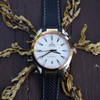

Be careful with investments. How to choose the right watch for life?
Here is another installment of our guide to choosing a wristwatch. This time, we will focus on the more expensive and most common category in the range of €1,000 to €5,000.
We all have our preferences. Personally, I would never spend thousands on a horse, pay more than €10 for a haircut, or buy expensive pure water from a trillion-year-old well in Iceland. We all have the right to choose, and everyone is interested in something different. But if you've fallen in love with watches, see something more in them, and believe that one day you'll give them to your offspring, then it makes sense to spend some time reading this article.
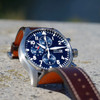
1. Brand
One of the most important things. A brand should be a summary of characteristics and a guarantee that quality has been delivered. For this to be the case, the company must earn it. It is therefore good to know the history and other details behind the company itself. If a company has a big name and someone argues that you are only paying for the brand, you should consider that the company had to take an enormously long and arduous journey, which could easily have taken a century, to build its reputation. (at least in most cases) How and to what extent it has influenced the world of watchmaking and, last but not least, what legendary models it has created. You cannot build this reputation overnight, even though many companies strive to do so.
Every brand communicates its attitude and focus to the world, an attitude that either suits me as a customer or not, and most importantly, whether I identify with it. Whether I recognize the same values and, let's say, principles. Let me explain with an example: If you are attracted to the world of aviation, airplanes, or are a pilot, you will probably choose a brand such as Breitling, IWC, or Zenith. The reason is quite simple. By looking at the timeline of individual manufacturers, you will find that their development is closely linked to this world, that in times when pilots could not rely on computers, it was these brands that had to create a quality tool that allowed pilots to perform basic tasks during flight. If aviation fuel doesn't run through your veins, but you prefer the smell of burnt rubber, you'll probably go for TAG Heuer and one of its legendary models, such as Autavia, Carrera, or the iconic Monaco. Upon closer inspection, on forums and authoritative websites dedicated to this topic, you will find that Jack Heuer loved auto-moto sports and devoted his life to providing car teams with the most accurate timekeeping and racers with ultra-easy-to-read watches. It is these circumstances that have shaped the way the watches look today. The fact that you wear them on your wrist, that the chronograph has two buttons instead of one, the arrangement of the time indicators and date, etc. So find a manufacturer that suits you and your values and interests.

2. Automatic versus mechanical
Watches should have a heart, and those with battery-powered movements or digital displays will never have one, period. Of course, there are exceptions to this recommendation: Breitling with a Superquartz movement and Seiko Astron, which are characterized by excellent accuracy even for battery-powered watches – but these are intended for customers who are looking for exactly this type of watch.
People love mechanical watches because they are an artistic legacy of history, watchmakers, and human ingenuity from a time when complex calculations had to be done by hand. Nowadays, movements are manufactured on automated lines, but individual tasks still require the touch of a human hand. From polishing and machining individual components, through their final assembly, to the magical moment when the master watchmaker inserts the heart – the oscillator. Stop by our store, pick up an automatic watch, wind it up, and listen. The feeling comes from the familiarity of what we hear: we listened to the beating of the human heart even before our cognitive thinking developed. You may not have thought about it this way before, but it is well known that rhythmic repetition brings a feeling of peace and contentment.
You probably expected me to go into more detail about the movement, but I will reserve that topic for another article. After all, this issue is quite extensive, and I see the growing trend of printing manufactured movements as the central point – but more on that next time.
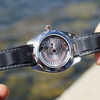
3. Anti-reflective coating and convex sapphire crystal
To ensure the best possible readability of the dial under all conditions, the manufacturer equips its sapphire crystal with an anti-reflective coating. The anti-reflective coating can be single-sided or double-sided. In the case of a double-sided anti-reflective coating (specifically in the case of Breitling), the manufacturer boasts that it can absorb up to 99% of light radiation. The watch thus appears as if it had no glass at all. You can check if the glass has an anti-reflective coating by simply looking at it under a light bulb: if the reflection is blue or green, you know that the watch has this coating. However, the anti-reflective coating also has its disadvantages. It can be scratched, causing hairline scratches on the glass. This can be remedied either by polishing the glass, thus removing the anti-reflective coating, or by the more expensive option of replacing the glass itself.
The second way in which manufacturers can eliminate light reflection is by using spherical—in other words, curved—glass that looks like a small dome. This makes it easy to reduce the amount of light reflected at an angle of 180 degrees. Originally used in "pilot watches," today every good watch manufacturer uses this type of curved glass.

4. Bracelet links connected with screws
Cheaper watches usually feature simple bracelet links connected with barrettes or thin metal pins with split ends. High-quality and more expensive brands use a much more precise method of connecting the links using a metal rod screwed in from the top and bottom. In the case of Breitling, we are talking about a different mechanism, which you can see in the picture. The bracelet thus appears very precise and, of course, high-quality. In the first picture, you can see a disassembled Breitling bracelet link, in the second an Omega link, and in the third, for comparison, a Certina watch bracelet where a "split-end pin" is used.
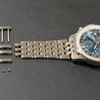
5. Accuracy certificate: Chronometer/Master Chronometer/Superlative Chronometer
In my previous article, I explained what a chronometer (COSC) is: in short, it is a certificate that guarantees accuracy of between -4 and +6 seconds per day. In order for a watch to obtain this certificate, its movement must undergo rigorous testing, but even before the testing itself, the movement must be given much greater care with an emphasis on precision workmanship. All Breitling watches are certified and are therefore certified timekeeping devices, as are Omega and Rolex watches.
Omega has taken its movements to a new level and proudly labels its calibers as Master Chronometers—this certification is based on classic COSC tests. Watches can only receive Master Chronometer status after they return from COSC certification. With such certified movements, we are talking about a deviation of 0 to +5 seconds per day.
We will discuss how Omega tests watches for accuracy in the next article. There are other certifications, such as Rolex's Superlative Chronometer. There are several of them, so you have to decide based on the parameters of each one.
What am I trying to say? It's great when a manufacturer constantly strives to push the boundaries, especially in terms of accuracy. I will always argue that watches are small works of art and a few seconds a day don't matter to me, but if the watch is accurate, it's a fantastic bonus. So if this matters to you, pay attention to this point.
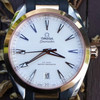
The process of choosing a watch, right up to the moment of purchase, is truly wonderful, as with everything else – I last experienced it when choosing the right enduro bike for singletrack. I hope these tips have been of some help to you. After all, you buy a watch like this either for several years or even for a lifetime.
Introduction
My name is Martin Demko, and I have been working with watches since 2011. During that time, I have handled many models, cheap and expensive, from renowned brands and lesser-known ones. My work is both a pleasure and a hobby for me. What I have always strived for and continue to strive for is maximum honesty towards customers, even at the expense of business. I have completed numerous courses and a considerable amount of training in Switzerland. If you like my articles and my subjective view on various issues, or if you disagree, feel free to write to me at m.demko@racio.com. I would be very happy to hear from you.



